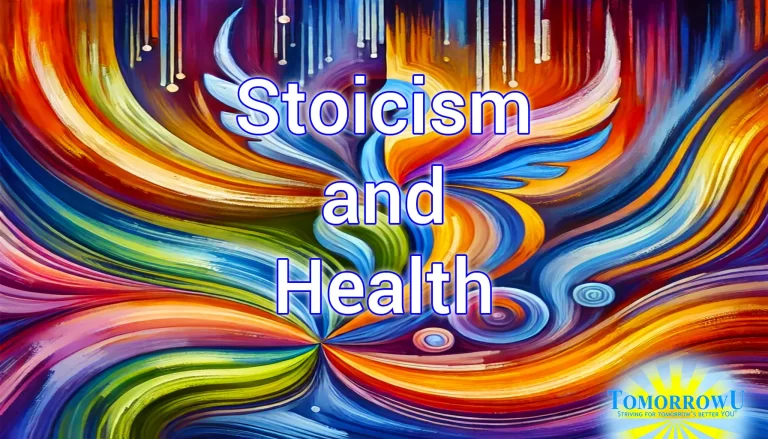Understanding NAFLD: The Silent Epidemic
Imagine your liver, a powerhouse organ silently working to detoxify your body, regulate blood sugar, and store vital nutrients. Now, picture this organ overwhelmed by fat buildup, not from alcohol but from daily dietary choices and lifestyle habits. This is the reality for millions with Non-Alcoholic Fatty Liver Disease (NAFLD), now often referred to as Metabolic Dysfunction-Associated Steatotic Liver Disease (MASLD). It is not just about liver health; it’s a marker of metabolic dysfunction that can foreshadow severe health issues if not addressed.
The good news? NAFLD is reversible in its early stages. With the right knowledge and proactive steps, you can take control and enhance your well-being, restoring not only your liver but also your energy, clarity, and overall vitality. Every choice you make today can shape a healthier tomorrow!
What is NAFLD?
NAFLD involves the accumulation of fat in the liver not caused by excessive alcohol consumption. It ranges from simple steatosis (fatty liver) to Non-Alcoholic Steatohepatitis (NASH), where inflammation and damage occur, potentially leading to fibrosis, cirrhosis, or even liver cancer. But here’s the empowering truth: You have the ability to heal and rejuvenate your liver naturally through lifestyle choices that promote holistic well-being.
The Prevalence and Impact of NAFLD
NAFLD affects approximately 30% of adults globally, with higher rates among individuals with obesity or diabetes (Teng et al., 2023). Alarmingly, it is also rising in children, correlating with increasing childhood obesity. Beyond liver damage, NAFLD significantly increases the risk of cardiovascular disease, type 2 diabetes, and metabolic syndrome.
This condition doesn’t just affect your liver—it impacts your energy levels, metabolism, and long-term health. By addressing NAFLD early, you can enhance your vitality, longevity, and quality of life.
Causes and Risk Factors
NAFLD doesn’t appear overnight. It is often the result of years of lifestyle choices that can be reversed. Key contributing factors include:
- Obesity – Excess body fat contributes to liver fat accumulation.
- Insulin Resistance – Common in type 2 diabetes, leading to excess fat storage in the liver.
- Poor Diet – High intake of processed foods, sugars, and unhealthy fats damages liver function.
- Sedentary Lifestyle – Physical inactivity exacerbates insulin resistance and obesity.
- Chronic Stress – Increases cortisol levels, which can promote fat storage in the liver.
- Genetics – Certain genetic predispositions increase susceptibility, but lifestyle factors still play a crucial role in progression or reversal.
Symptoms and Diagnosis
Early Warning Signs
NAFLD is often asymptomatic, but when symptoms arise, they may include:
- Persistent fatigue and low energy
- Discomfort or mild pain in the upper right abdomen
- Brain fog, difficulty concentrating
- Unexplained weight gain or difficulty losing weight
Diagnostic Tests
Since symptoms can be subtle, early detection is key. Common diagnostic methods include:
- Liver Function Tests – Elevated liver enzymes (ALT, AST) suggest liver stress.
- Imaging (Ultrasound, MRI, CT scans) – Helps visualize fat accumulation.
- Liver Biopsy – Used in severe cases to confirm NASH or fibrosis progression.
Actionable Strategies for NAFLD Management
1. Optimize Your Diet for Liver Health
Embrace a Mediterranean Diet
A Mediterranean-style diet, rich in leafy greens, lean proteins, healthy fats, and fiber, has been scientifically proven to reduce liver fat and enhance metabolic function (Gelli et al., 2017). This diet includes:
- Colorful vegetables (spinach, kale, bell peppers) for antioxidants
- Healthy fats (avocados, extra virgin olive oil, nuts) to reduce inflammation
- Lean proteins (wild-caught fish, pasture-raised eggs, grass-fed meats)
- Low-glycemic fruits (berries, apples) for natural sweetness without spiking blood sugar
Reduce Sugar and Processed Foods
- Eliminate sugary beverages, refined carbs, and industrial seed oils.
- Opt for whole, unprocessed foods to support liver detoxification.
2. Engage in Daily Movement
Physical activity is a powerful tool for reversing NAFLD. Recommended activities include:
- Brisk walking, jogging, or cycling (30-45 minutes, 4-5 times per week)
- Strength training (2-3 times per week to build muscle and improve metabolism)
- Yoga and stretching to reduce stress and enhance circulation
Even small changes—such as standing more often, stretching, or taking the stairs—can reduce liver fat and improve overall well-being.
3. Support Your Gut Microbiome
Your gut health is directly connected to liver function. Nourish your microbiome by:
- Eating probiotic-rich foods (kimchi, sauerkraut, kefir, yogurt)
- Including prebiotic fibers (onions, garlic, asparagus, flaxseeds)
- Avoiding gut-damaging foods (excess alcohol, artificial sweeteners, processed junk foods)
4. Reduce Stress and Improve Sleep
Chronic stress raises cortisol levels, worsening insulin resistance and promoting fat accumulation in the liver. Manage stress with:
- Deep breathing techniques and mindfulness
- Daily gratitude practices and journaling
- 7-9 hours of quality sleep per night to allow liver detoxification and repair
Medical Interventions and Future Treatments
Key Supplements for Liver Support
- Milk Thistle (Silymarin): Supports liver detox and regeneration.
- N-Acetylcysteine (NAC): Boosts glutathione, a powerful antioxidant for liver health.
- Curcumin (Turmeric Extract): Reduces inflammation and improves insulin sensitivity.
- Berberine: Helps regulate blood sugar and reduce liver fat.
Medications and Research Advancements
While lifestyle remains the foundation of NAFLD reversal, medical interventions continue to evolve. Some emerging treatments include:
- GLP-1 Receptor Agonists (e.g., Semaglutide): Aid in weight loss and metabolic improvement.
- New anti-inflammatory drugs and targeted therapies under investigation for liver fibrosis treatment.
Wellness Wrap-Up
NAFLD is not a life sentence—it is an opportunity to take charge of your health and transform your well-being. By making small, intentional choices every day—nourishing your body with whole foods, staying active, reducing stress, and prioritizing gut health—you can heal your liver and regain vitality.
You hold the power to change your future. Start today and keep striving for tomorrow’s better YOU!
References
- Cusi, K., Isaacs, S., Barb, D., Basu, R., Caprio, S., Garvey, W. T., Kashyap, S., Mechanick, J. I., Mouzaki, M., Nadolsky, K., Rinella, M. E., Vos, M. B., & Younossi, Z. (2022). American Association of Clinical Endocrinology Clinical Practice Guideline for the Diagnosis and Management of Nonalcoholic Fatty Liver Disease in Primary Care and Endocrinology Clinical Settings: Co-Sponsored by the American Association for the Study of Liver Diseases (AASLD). Endocrine practice : official journal of the American College of Endocrinology and the American Association of Clinical Endocrinologists, 28(5), 528–562. https://doi.org/10.1016/j.eprac.2022.03.010
- Gelli, C., Tarocchi, M., Abenavoli, L., Di Renzo, L., Galli, A., & De Lorenzo, A. (2017). Effect of a counseling-supported treatment with the Mediterranean diet and physical activity on the severity of the non-alcoholic fatty liver disease. World journal of gastroenterology, 23(17), 3150–3162. https://doi.org/10.3748/wjg.v23.i17.3150
- Long, M. T., Noureddin, M., & Lim, J. K. (2022). AGA Clinical Practice Update: Diagnosis and Management of Nonalcoholic Fatty Liver Disease in Lean Individuals: Expert Review. Gastroenterology, 163(3), 764–774.e1. https://doi.org/10.1053/j.gastro.2022.06.023
- Malik, A., & Malik, M. (2024). Effects of curcumin in patients with non-alcoholic fatty liver disease: A systematic review and meta-analysis. Canadian liver journal, 7(2), 299–315. https://doi.org/10.3138/canlivj-2023-0022
- Raza, S., Rajak, S., Upadhyay, A., Tewari, A., & Anthony Sinha, R. (2021). Current treatment paradigms and emerging therapies for NAFLD/NASH. Frontiers in bioscience (Landmark edition), 26(2), 206–237. https://doi.org/10.2741/4892
- Rinella, M., Sanyal, A. Management of NAFLD: a stage-based approach. Nat Rev Gastroenterol Hepatol 13, 196–205 (2016). https://doi.org/10.1038/nrgastro.2016.3
- Romero-Gómez, M., Zelber-Sagi, S., & Trenell, M. (2017). Treatment of NAFLD with diet, physical activity and exercise. Journal of hepatology, 67(4), 829–846. https://doi.org/10.1016/j.jhep.2017.05.016
- Teng, M. L., Ng, C. H., Huang, D. Q., Chan, K. E., Tan, D. J., Lim, W. H., Yang, J. D., Tan, E., & Muthiah, M. D. (2023). Global incidence and prevalence of nonalcoholic fatty liver disease. Clinical and molecular hepatology, 29(Suppl), S32–S42. https://doi.org/10.3350/cmh.2022.0365
Note: Always consult with a healthcare professional before making significant changes, especially if you have existing health conditions.




